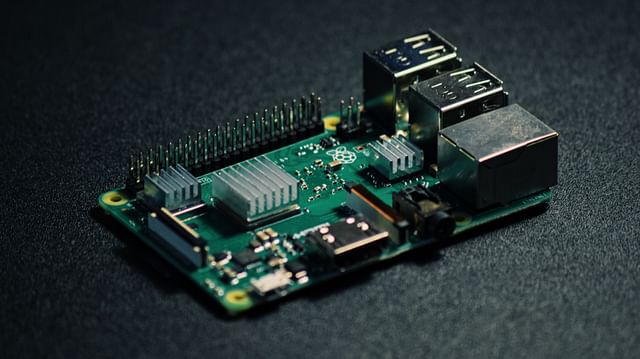
Using Raspberry Pi as a Smart Home Hub: Pros, Cons, and Set-Up Guide
Home automation enthusiasts are always on the lookout for a reliable and cost-effective way to automate their homes. Smart home hubs can make a substantial difference in facilitating the interaction of different smart home products, simplifying the operation, and enhancing the overall experience. While there's an array of conventional smart home hubs available and accessible, few of them come at an affordable price with extensive customization options and third-party integrations. One non-conventional and practical alternative that you can consider is using a Raspberry Pi as a smart home hub.
What is Raspberry Pi?
Raspberry Pi is a credit card-sized single-board computer that was initially designed to assist in teaching basic computer science to children. Over time, it has grown into a versatile technology platform, aiding robotic projects, media centers, and most importantly, home automation projects. Its exceptional open-source nature and the vast Linux-based libraries of packages have enabled numerous practical applications.
Benefits of Raspberry Pi as A Smart Home Hub
Cost-Effective: Compared to conventional smart home hubs, Raspberry Pi is relatively affordable and provides better customization options.
Customizability: With Raspberry Pi, users can leverage the platform's open-source nature and customize their smart home hub to suit their preferences and needs, from the look and feel to the behavior and capabilities.
Third-Party Integrations: Raspberry Pi's immense community and Linux-based package archives offer a vast range of additional tools and integrations to incorporate into your smart home automation hub. From voice assistants like Google Assistant and Alexa to Z-Wave and Zigbee devices, the possibilities are endless.
Setting Up a Raspberry Pi as A Smart Home Hub
What You'll Need
- Raspberry Pi: Preferably model 3B or above, with an Ethernet port or Wi-Fi capabilities.
- MicroSD Card: A minimum of 16GB for Raspbian and additional software and applications.
- Power Supply: 5V/2.5A Micro-USB power adapter.
- Ethernet Cable or Wi-Fi Dongle.
- Monitor, Keyboard, and Mouse: These peripherals are necessary to set up and configure your Raspberry Pi initially.
Step-by-Step Guide
Install Raspbian OS on your MicroSD Card, following this official guide.
After flashing the OS, insert the MicroSD Card into the Raspberry Pi, connect an Ethernet cable or Wi-Fi dongle, and plug it in.
Boot your Raspberry Pi and set up the necessary configurations, such as the hostname, password, and localization settings.
Run regular system updates by running the commands below in a terminal window:
sudo apt-get update
sudo apt-get upgrade -y
Install the software you need, such as Node-RED, Mosquitto, or Home Assistant, depending on your preferences.
Configure the software to interact with your connected smart home devices, following specific instructions and guides provided by the respective developers.
Customize your automation routines and behavior to fit your needs and preferences using the chosen automation software.
Integrate voice assistants like Alexa and Google Assistant for hands-free smart home control.
With your Raspberry Pi-powered Smart Home Hub set up, you can now enjoy a whole new level of smart home automation experience.
Cons of Using Raspberry Pi as A Smart Home Hub
Of course, there are also some downsides to using a Raspberry Pi as a Smart Home Hub. Some of the cons are:
Technical Know-How: Setting up and configuring your smart home hub using Raspberry Pi requires some degree of technical knowledge, which may not be ideal for some users.
Reliability: Raspberry Pi is not specifically designed for 24/7 use, and it may not be as reliable as conventional smart home hubs.
Lack of Technical Support: Unlike conventional smart home hubs, Raspberry Pi is generally community-driven, and support is not always guaranteed.
Conclusion
Using a Raspberry Pi as a Smart Home Hub is an excellent way of enhancing your smart home automation experience. With its versatility, openness, and customization options, it can be a cost-effective and practical alternative to conventional smart home hubs. While it may require some level of technical know-how, the benefits are undoubtedly worth the effort.
So what are you waiting for? Grab a Raspberry Pi, follow this guide, and start automating your home today!
Posted on: Nov 26, 2022 Last updated at: May 4, 2023